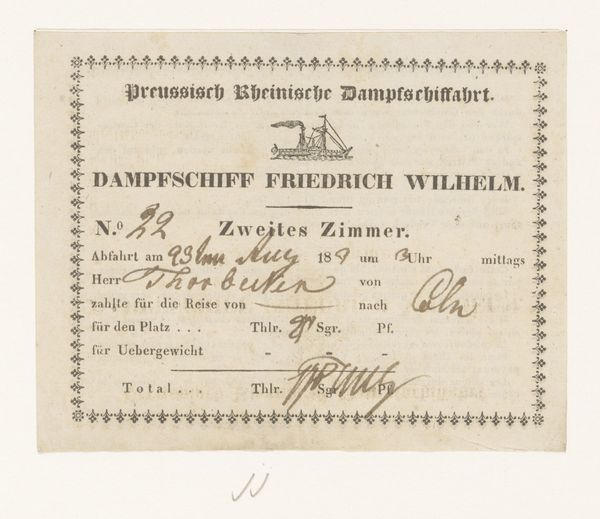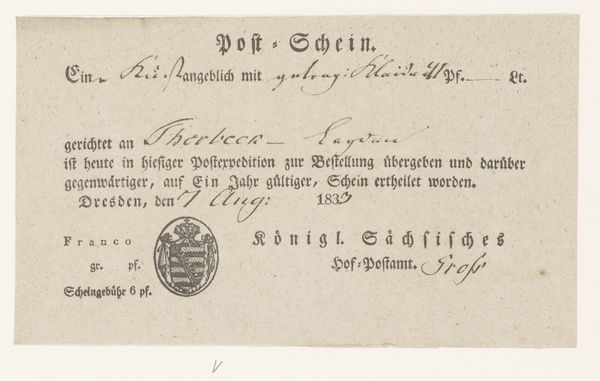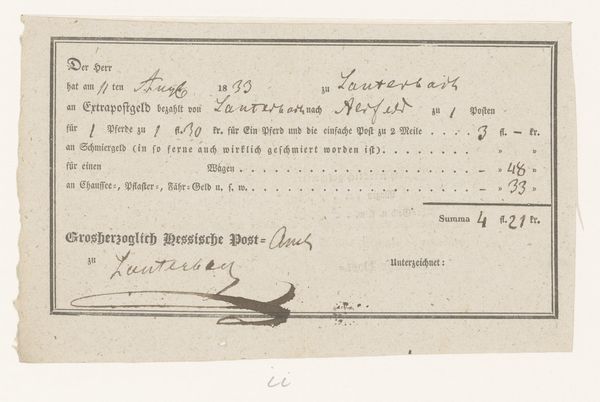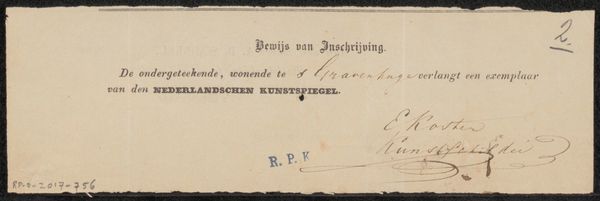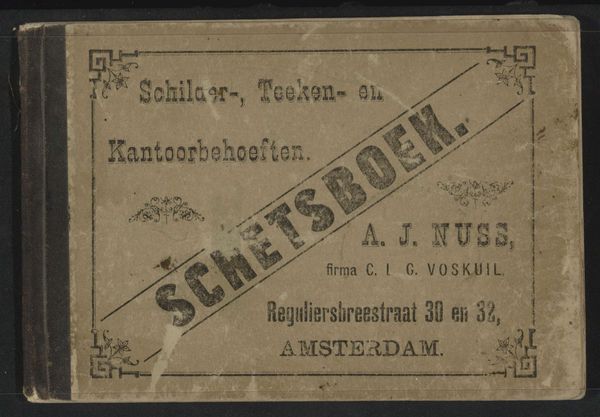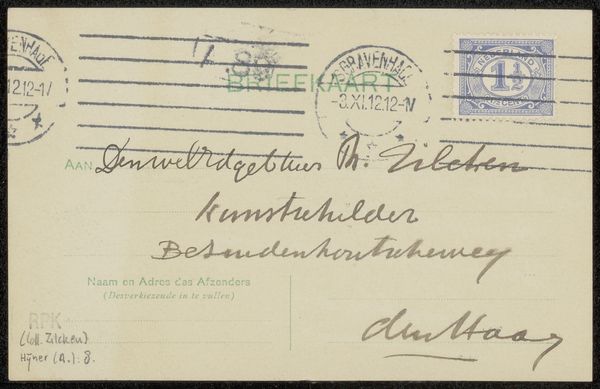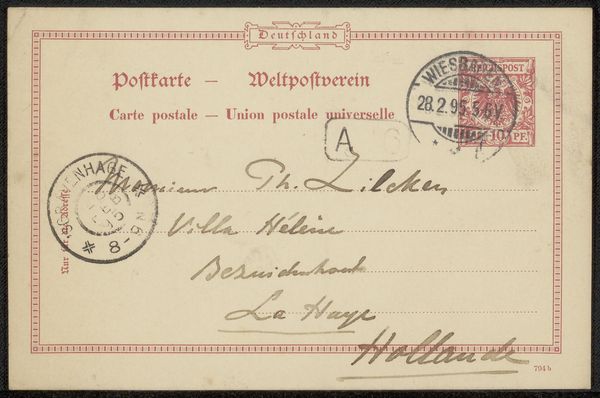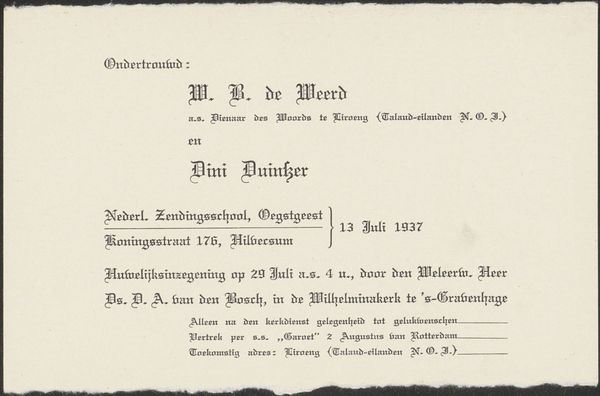
print, paper
# print
#
paper
#
calligraphy
Dimensions: height 5.3 cm, width 8.3 cm
Copyright: Rijks Museum: Open Domain
Editor: Here we have "Document," potentially from 1833-1838, crafted by an anonymous artist. It’s a printed ticket, a fragile piece of paper with bold calligraphy. The mood feels bureaucratic, almost detached. What can we discern from this fragment? Curator: This seemingly mundane piece of ephemera speaks volumes when we situate it within its historical context. Consider the rise of steamships in the 19th century. What did that symbolize for society? It’s about progress, trade, movement of people and ideas – but for whom? This ticket grants access to "Zweites Zimmer," second class. Editor: So, class is a consideration? Curator: Precisely. Transportation became stratified. While steamships connected cities and countries, they also reinforced existing social hierarchies. The price listed here tells a story. Two Thaler and twenty…what does that represent in relation to a working person’s wages? Was the dream of progress available to all? Look closer: it says “Dampfschiff Concordia.” Think of "Concordia" – harmony, agreement – but does the reality of second-class travel align with that ideal? What stories of marginalized voices and disparate experiences might this paper omit? Editor: That really shifts my perspective. It's not just a ticket; it's a signifier of social and economic divides within society, revealing the complexities of that era. Curator: Exactly! Objects like these are embedded with social relations, encoded with the biases and power structures of their time. Looking closer helps us challenge the narratives around technological advancement. Editor: Thank you; I’ve gained a fresh understanding today! Curator: My pleasure! Examining such pieces helps us contextualize the past.
Comments
No comments
Be the first to comment and join the conversation on the ultimate creative platform.
